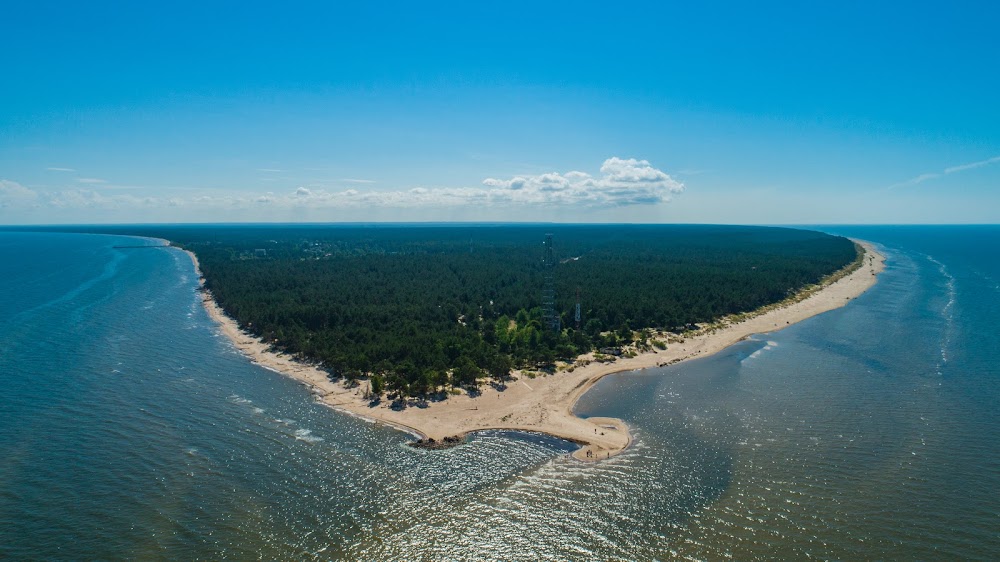Slītere National Park (Slīteres nacionālais parks)
Overview
Slītere National Park, nestled within the picturesque Dundaga Municipality of Latvia, is a paradise for both nature enthusiasts and history buffs. This remarkable park is a mosaic of unique ecosystems and intriguing historical remnants, establishing it as one of Latvia's most captivating natural treasures.
Historical Significance
Originally designated as the Slītere Strict Nature Reserve in 1921, the park was created to safeguard its distinctive natural landscapes. It achieved national park status in 2000, reflecting a commitment to preserve its diverse flora and fauna while promoting ecological tourism. Spanning approximately 16,360 hectares, Slītere features ancient broadleaf forests, bogs, coastal habitats, and the stunning Blue Hills of Slītere.
Geological Wonders
One of the park's most intriguing features is the "plateau," a raised seabed that dates back 400 million years. This geological marvel was uplifted during the ice ages, resulting in the unique landscapes visible today. Along the coastline, relic sand dunes and pine forests tell the tale of the prehistoric Littorina Sea, which once covered this area.
Diverse Ecosystems
Slītere is celebrated for its incredibly diverse ecosystems. Visitors can encounter a wide range of plant life, including rare species like the Lady’s-slipper orchid. The forests are interspersed with bogs that host unique plant communities adapted to the harsh, nutrient-poor conditions. During the warmer months, the meadows and marshes burst into vibrant colors, attracting birdwatchers from around the globe. The park serves as a critical stopover for migratory birds, where you might spot species such as the black stork, lesser spotted eagle, and the elusive corncrake.
Wildlife Encounters
The park is a sanctuary for various animal species. Beavers, otters, and foxes are frequently sighted along the trails, while Latvia's largest population of wolves and elusive lynxes roam the deeper forests. The coastal waters of Slītere are home to seals and a rich variety of fish.
Cultural Heritage
Human history is intricately woven into the fabric of Slītere National Park, particularly through the Livonian heritage. The Livonian people, a Finno-Ugric ethnic group indigenous to this region, have left a lasting cultural imprint. Visitors can explore old Livonian fishing villages—like Kolka, Mazirbe, and Saunags—which serve as living museums, preserving traditions from a bygone era.
Kolka Cape
A highlight of the park is Kolka Cape, the northernmost point of the Kurzeme Peninsula. Here, tourists can experience the dramatic convergence of the Gulf of Riga and the open Baltic Sea. The breathtaking scenery is complemented by historical significance, with Kolka Lighthouse standing as a guide for sailors navigating the treacherous waters for over a century.
Exploration Opportunities
Slītere features a well-maintained network of trails, making it accessible for visitors eager to explore its diverse landscapes. The Šlītere Nature Trail provides an easy route through the forest, while more adventurous hikers may prefer the Cirpstene Nature Trail, which winds through coastal dunes and offers stunning sea views. For a cultural experience, the Livonian Coast Trail meanders through old fishing villages and along the scenic coastline.
Visitor Experience
Facilities and interpretive programs enrich the visitor experience at Slītere National Park. The visitor center, located in the historic Dundaga Castle, showcases exhibitions on the area's natural and cultural history. Educational programs and guided tours help deepen visitors' understanding of the park's ecosystems and heritage.
Conservation Efforts
Conservation is a vital aspect of the park's ongoing narrative. The Latvian government, in collaboration with environmental organizations, has implemented various initiatives to protect endangered species and restore degraded habitats. Slītere is also designated as a Natura 2000 site, part of a network of protected areas across the European Union aimed at safeguarding Europe’s most valuable and threatened species and habitats.
In summary, Slītere National Park is a harmonious blend of natural beauty, geological wonders, and rich cultural history. Its carefully preserved landscapes and abundant biodiversity narrate tales of ancient seas, glacial epochs, and resilient human cultures. Whether you are a birdwatcher, hiker, history enthusiast, or simply someone who appreciates the tranquility of nature, Slītere National Park promises a memorable and enriching experience.







